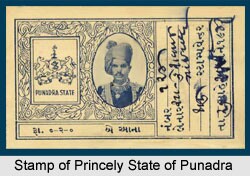Koli Princely State Of Veja
Princely State Of Veja (Vija-No-Ness)
Ruling Family
Koli
Subcaste
Khasia
Title
Rana
State
Veja
Area
0.79 Sq Mile
Village
1
Population
206 (1931)
Yearly Revenue
750 Rupees (1903-4)
The Princely State of Veja, also known as Veja-no-ness, was one of the earlier princely states of India that was managed and supervised by native shareholders under the meandering command of the British authorities. The princely state was under the indirect control of the British Empire in India. The state was scattered over a total area of 0.79 sq miles and comprised of a total population of 206 in the year 1931. The taluka of Veja was situated in the Chok Datha Thana and the territory consisted of only a single village that was located almost 20 miles towards the north of Mahuva. The territory lied in the southeastern Kathiawar. The state of Veja-no-ness was bounded by central area of the princely state of Chok in the west and north; by the state of Boda-no-ness in the east; and by the princely state of Junapadar in the south.
Location of Princely State of Veja
Chok Datha Thana, which covered a total area of 115 sq miles and comprised of a total population of 24,782 in the year 1931. The region included around 23 estates and almost 22 estates of them were situated in a compacted area near Chok. The territory contained a virtual enclave in southern Bhavnagar, except a general border with Palitana in the north. The remaining taluka of Datha was located around 10 miles from the other states. It was completely surrounded by the princely state of Bhavnagar.
The Princely State of Veja or Veja-no-ness was under the administrative control of the Baroda Agency, which was incorporated as a part of the Western India States Agency. Later the territory was merged with the state of Gujarat. The state was also a part of the Eastern Kathiawar Agency and the Chok Datha Thana as well.
History of Princely State of Veja
The princely state of Veja-no-ness was claimed by more than one native prince, who were Khasia Kolis.They held the title of Rana Saheb.
The Princely State of Veja was a non- jurisdictionary native state. The estate holders of the region were primarily illiterate or had limited education and were tremendously impoverished and deprived. Most of them were shepherds or cultivators. According to the Attachment Scheme of 1943, the princely state of Veja-no-ness was attached to the princely state of Bhavanagar. The territory paid annual tribute to the princely state of Baroda.
Accession of Princely State of Veja
The native shareholders of the princely state of Veja or Veja-no-ness acceded the territory to the newly independent Union of India after the political withdrawal of the British Government of India from the country on 15th August 1947. After the country was divided between India and Pakistan, the native rulers were given the choice of acceding to either the Dominion of India or the Dominion of Pakistan. The estate holders of the state decided to merge with the Republic of India.
Source by https://kolistan.blogspot.in
Mr. Prem ji Mahour Koli Palwal, Hariyana




Comments
Post a Comment